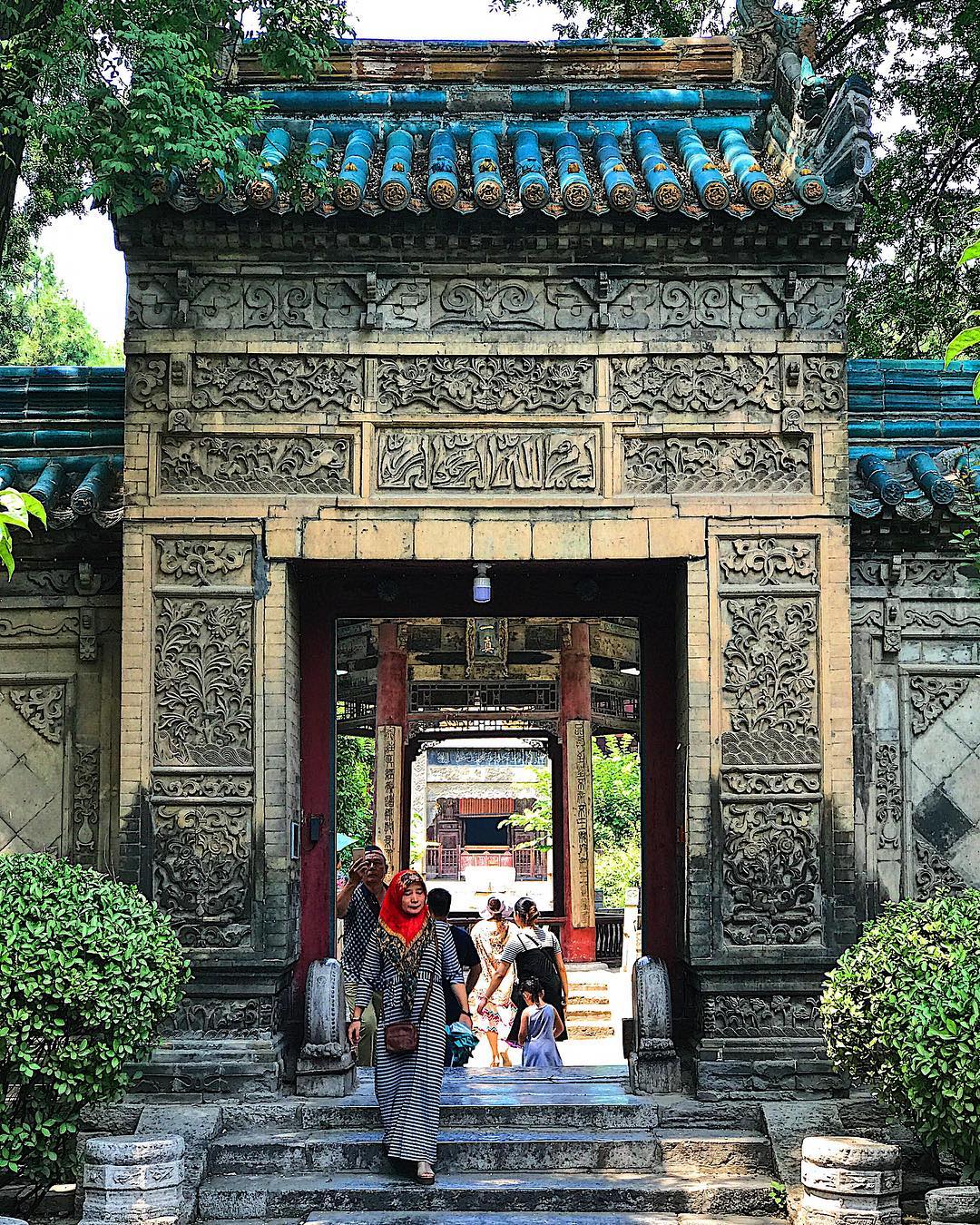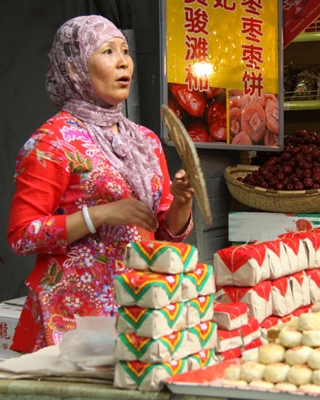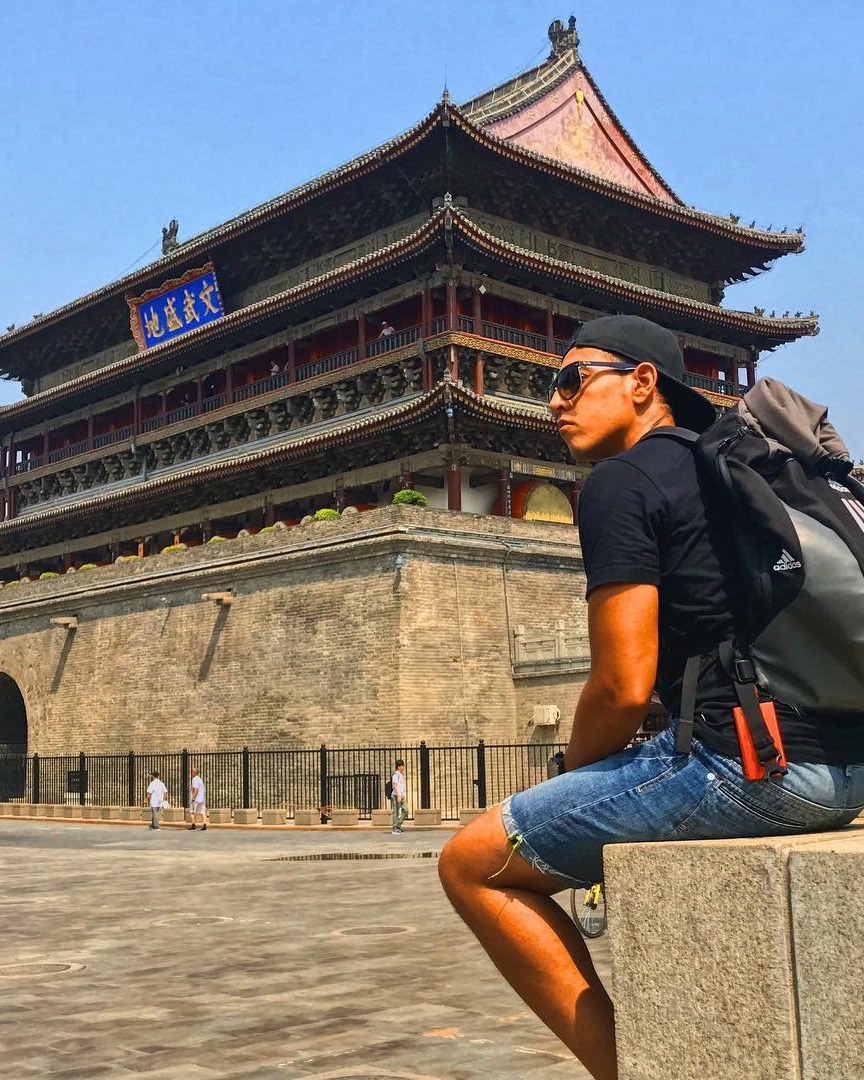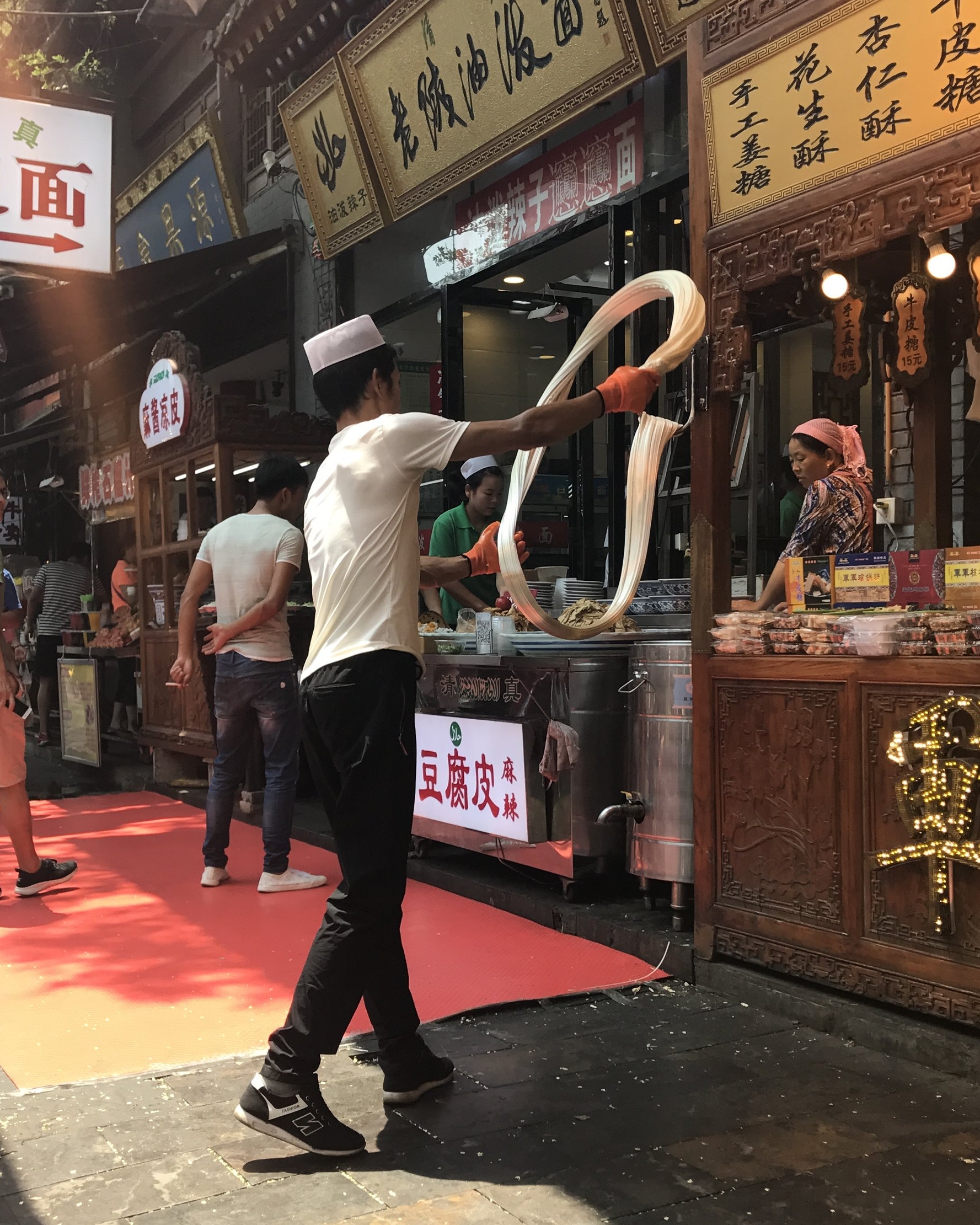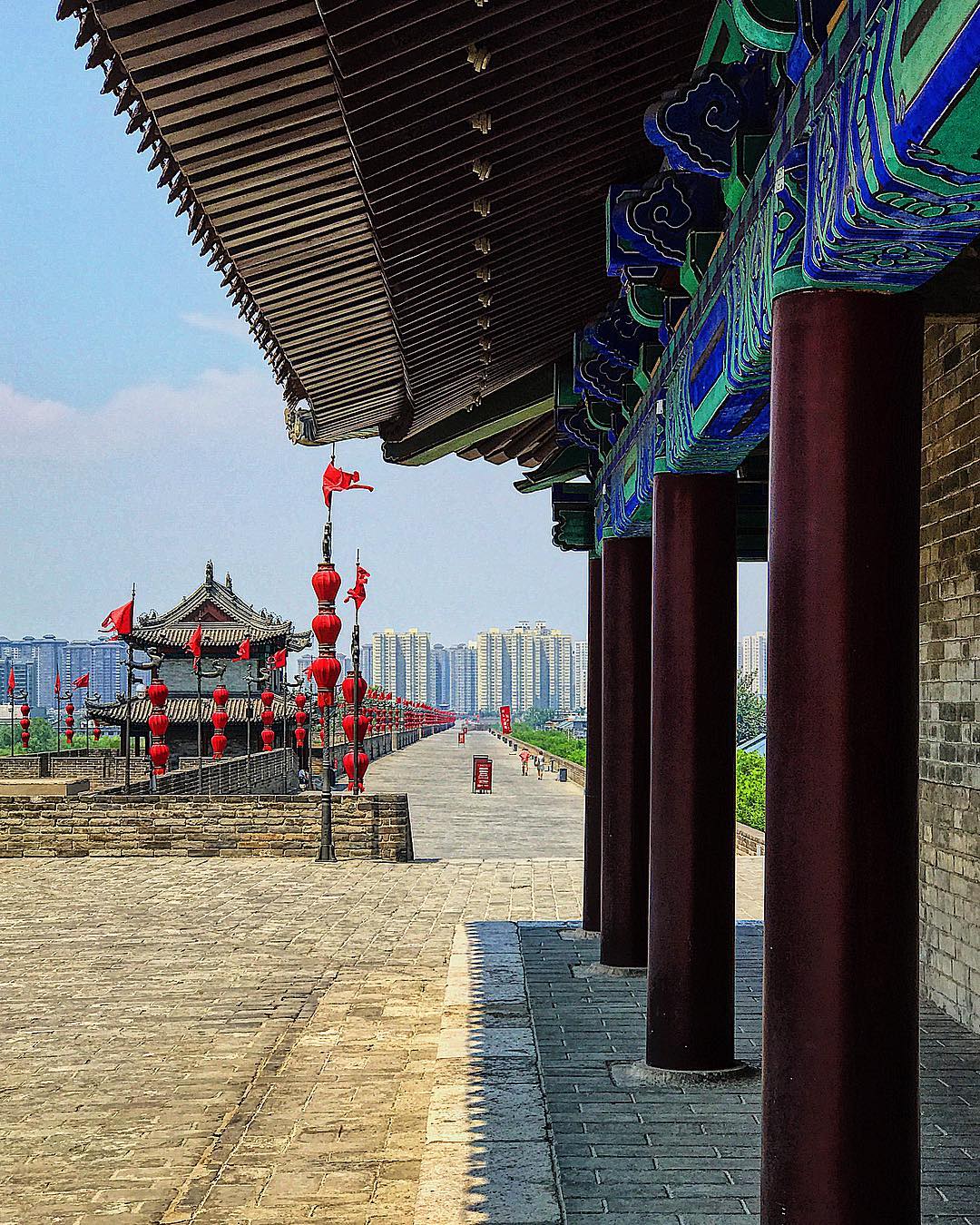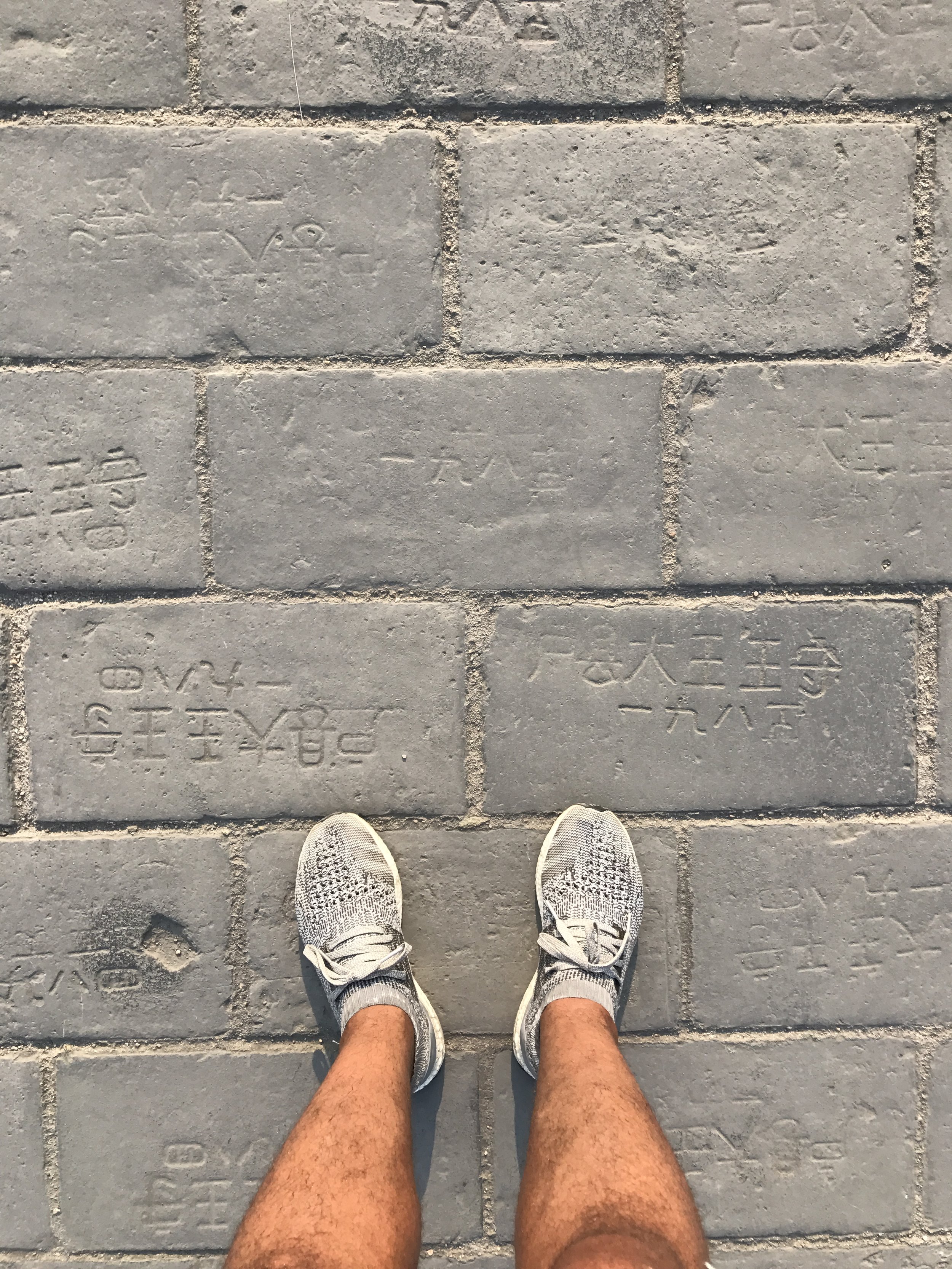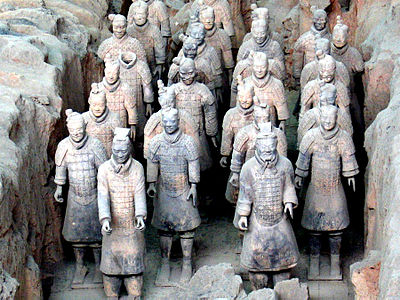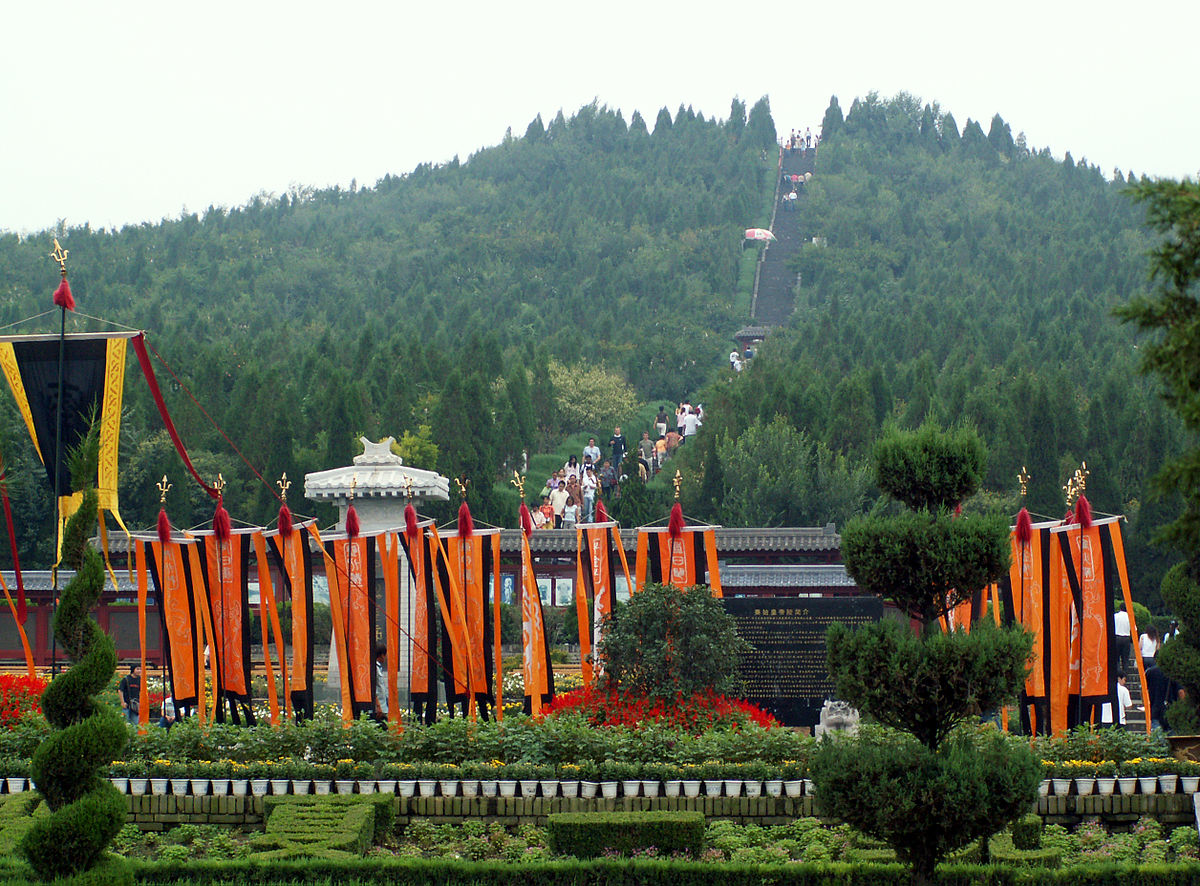XI'AN: CROSSROADS OF CULTURES
Visiting the city of Xi'an was probably the most anticipated of my travels so far. Remember back when I said I would not research anything about my travel destinations anymore to keep the surprise effect to its maximum? Well, in the case of Xi'an it's a little bit different. As I promised to myself, I did not research anything lately. However, I've been willing to visit this city for a long time. I was (and still am) completely fascinated by this city's culture and history. The first time Xi'an caught my attention was about 15 years ago - in 2002 - when I watched the amazing movie "Hero" (an absolute masterpiece, both narratively and visually). The movie takes place in Xi'an (at the time named Chang'an) among other places and tells the tale of a nameless insurgent whose ambition is to prevent the King of Qin in his quest to unite the Seven Kingdoms (or the Seven Warring States of Qin, Qi, Chu, Yan, Han, Zhao and Wei). Back to reality, Qin succeeded in this endeavour and became the first Emperor of China. Since then, I have watched numerous documentaries about the city and even took a course in university on Chinese Culture. So it is with a little over four hours of sleep, but loads of enthusiasm that I jumped out of my bunk bed and got ready to discover the city of "Western Peace".
Xi'an: Capital of China as a Global Society
Although Xi'an has been renamed countless times, it often had the important role of the administrative capital of the Chinese Empire, which during the 7th Century was the greatest and the most cosmopolitan city on Earth. What made it great was not only its economic and cultural power but its openness to other cultures. It's often said that in History, China has been a closed civilization, introverted, cutting itself off from the rest of the World and there have been times it's looked that way. But, in reality, and since the beginning of times, China has always flourished on contact. The Silk Road is the best witness of China's great age of international connection as it was a great pathway of exchange for several foreign people. People from all across Eurasia visited China to exchange goods, exotic flavours, ideas and even new religions. Many cultures even decided to settle in Xi'an as the Silk Road turned China for the first time into a global society. In the 7th Century, Xi'an was already hosting many cultures and yet, they all found a way to coexist. While walking the old streets of Xi'an, I could easily recognize these cultures as they are still represented today.
Xi'an Muslim Quarter
On my way to the hostel the night before, I was admiring the city for some reference points I could use the next day as the taxi was driving me around. The monument that caught my attention the most was the Bell Tower - a dominant structure located right in the middle of the Old Town - on the main roundabout separating the four main quarters. I know we are very far from Europe, but its structure and location reminded me of the Arc de Triomphe in Paris (see yourself). So, this morning, I decided the Bell Tower would be my first stop and I'd go from there with my newly acquired pocket-size tourist map in hand. From the Bell Tower, the Drum Tower was the most impressive monument I could catch sight of. So, I decided to walk in that direction (looks like I was still in a "scavenger hunt" mood from the previous night). From there I entered what looked like a bazaar. In the middle of it was a vast clearing with high walls defining it. It was the Great Mosque of Xi'an - the largest mosque in China. I was right in the epicentre of the Muslim District. When I stepped into the (very touristy) mosque, the perfect amalgam of the Chinese and Muslim Cultures moved me. The architecture was so unique - yet so harmonious - that it almost makes sense to an untrained eye to be witnessing such beauty. There was definitely something poetic in its layout: a complex of adjacent Chinese gardens dominated by large structures from the Ming Dynasty and ornamented with Koranic arabesques. A high ming-style tower was erected in the middle of the central garden, but its function was proper to the Muslim religion. It was a ming-style minaret (Those are words I never thought I'd say in the same sentence!) - the tower that the mosque's imam uses for the call to prayer. At the very end of the courtyard was the praying area, to which the access was restricted to prayers. I must have spent at least two hours wandering around each garden and contemplating their singular beauty.
I then made my way through the bazaar and got to what looked like the main street based on the number of people walking by. Although the street was not quite large, it was where the Muslim Quarter came alive. I could see here and there food stalls of vendors attracting passersby with delicious meats and flavours sizzling on the grill. What caught my attention was the cultural integration of the Arab World into the Chinese Empire. With the Silk Road, Arab merchants - among others cultures of Eurasia - have been coming to Xi'an for centuries. They have been coming here so often that some of them have decided to settle, bringing with them not only their culture but also their openmindedness to learn from their new land of adoption. During my stay, I witnessed Arabs living in China, Chinese of Muslim confession, Daoists, Buddhist - all of them living together in the same city. There lies the secret of cultural integration in my opinion: a mutual willingness to exchange. This means bringing and sharing your own culture but also giving up a part of it to accept part of a new culture.
Xi'an Ancient City Wall
It is now 1:30 pm and I have walked around the Muslim Quarter for quite a while already, including going up and down the famous Beiyuanmen Moslem Street that starts from the Gate and drags all the way to the Drum Tower. The sun has now reached the zenith and I had the (not so) brilliant idea to walk on the City Wall. I just thought it would be an awesome way to see most of the city from a higher point. So I climbed up the stairs to the top part of the wall for 54 Yuan and started walking. At that time, I did not know that the total perimeter was 15km. But, I love hiking so why now do it on a wall this time? There were only a few people who were crazy enough to walk outside on an uncovered area with no shade. And the only few who did were biking rather than walking. I thought it was a smart idea to cycle around but the idea was unappealing to me. I found not pride in easing the path to glory through the use of unnatural means of transportation. The spirit of a champion! Although both the scenery and the soundtrack that was transmitted all along the walk were quite enjoyable, I have to say it was quite a challenge to complete this hike. At each of the four gates around the wall (North, South, East and West), I had the chance to refuel with water, coffee and sugar (ice cream in this case). But, the last 500m were the hardest as I could feel my body dehydrating and my muscles getting soarer at every step. I had to take long breaks every ten meters on the last hundred and made sure I stood up slowly after catching my breath and massaging my contracted tibialis anterior. I must have drunk three litres of water during the whole walk and it was still not enough to sustain a healthy level of hydration. I still finished the walk-in pain - and on my way out of the wall I went back inside the ticket box office where the air conditioning was blasted through the roof (like everywhere in China). I stayed there for a good half-hour and then cabbed it back to the hostel.
The Terracotta Army
Most people to whom I've been mentioning Xi'an as my next destination looked at me with two wide-open eyeballs that said: "Xi-what?". Then, when I mentioned the Terracotta Army they all knew what I was talking about. For those who don't, it's a collection of terracotta sculptures depicting the armies of Qin, the first Emperor of China. It's a form of funerary art buried with the Emperor to protect him in his afterlife. As I was planning my visit to the mausoleum I realized it was no piece of cake to get there. Indeed, the site is located around an hour and a half outside of Xi'an and there is no direct way to get there by public transportation. Therefore, two options are to be considered: 1) hiring a cab to bring, which could get very pricy given the distance, or 2) booking a ticket as part of the group tour organized by the hostel. I went for option #2. The entry fee to the site is 150 Yuan, but the hostel charges 258 Yuan which also included transportation by shuttle bus and an English-speaking guide. I thought: "If I attempt to get there by myself I will probably end up paying much more than the 258 Yuan and won't even get any explanations on what I'm seeing." The tour took the whole day and it was totally worth it. The meeting point was at the hostel reception. I then noticed that a lovely lady which I met the day before at the hostel pub was also joining the tour. We started talking because she overheard me saying I was from Montreal. She was from North Carolina and visited Montreal a year ago for the famous Osheaga music festival. We spent the whole day together as we had some great conversations. Plus I gave her a break from her annoying chaperon she was travelling with. Her brother living in China sent her sightseeing with a friend of a friend who barely speaks English to make sure she was safe. Back to the Terracotta Army, the site is divided into three pavilions where you could see some ruins of what looked like old monuments that collapsed over thousands of statues. Archeologists have been working for years digging those pieces of terracotta, trying to restore them and glue them back together. That means all the warriors you see in pictures are reconstructed from small pieces found underground. How insane is that! An international community is working on it at a pace of three months per statute while securing work for at least the next 75 years. The site also hosts the tomb of Emperor Qin at the foot of the Lishan Mountain. The casket is buried deep under a hill and contains mercury - a poisonous substance for us humans. To this day the casket remains unopen.
Take-Away from a journey in the center of China
We all have a preconceived idea of China today based on what the media choose to broadcast: the one-party State, the largest nation on Earth, the impressive economic growth of the last 30 years which couldn't help but push its power and influence across the World. However, there is another China that is much less mediatized but gives us a more comprehensive understanding of its society today. And to understand it we must go back thousands of years. After all, China is the oldest continuous state on Earth and it is worth scratching deeper than the surface. And it all starts here in Xi'an. To really open up to another culture needs patience and humility, to be willing to share some of your own preconceptions. In the 7th Century, the Chinese were confident enough to do that. That is exactly what brought me to this city. With all the problems we hear in today's society about wars on religion and cultural conflicts, I wanted to know more about what made the city of Xi'an so successful despite it facing the same issues we encounter in our societies today. Anyone who knows me on a personal basis or has been reading my blog knows how much I am a strong believer that cultural diversity contributes to making better people, more tolerant and open-minded. The more cultures you know, the more you can adopt the positive sides of each one while letting the negative far behind.


